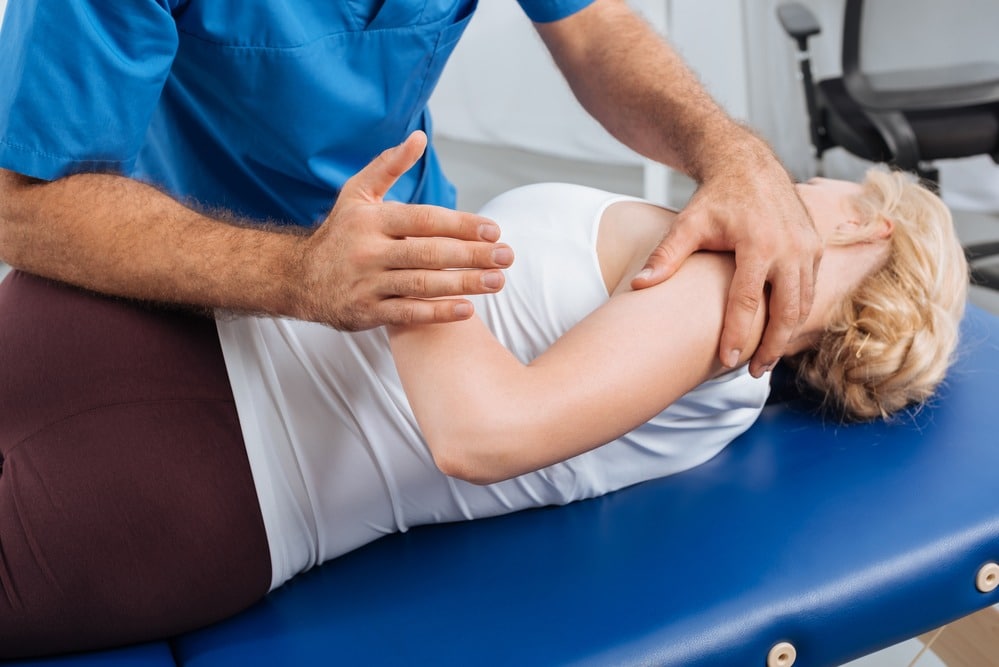Scoliosis is a medical condition in which the spine curves to the side. Scoliosis may cause pain ranging from mild to severe. In most patients, the pain is felt in the back. However, scoliosis can also cause pain in other areas of the body. Pain in the neck, shoulders, hips and knees can all be caused by scoliosis.
What You Should Know About Scoliosis
The size of the curvature is typically measured in degrees. Those who have a curve measuring more than ten degree are said to have a scoliosis. Those whose spinal curve measures 25-40 degrees have a moderate curve. When the spine curves above fifty degrees, the person has a severe curvature.
The degree of the spinal curvature does not always determine the level of pain and discomfort caused. For instance, some patients with only a slight curvature report chronic and even severe pain.
Scoliosis is typically diagnosed with an X-ray. A chiropractor or specialist can usually look at a patient and tell if moderate or severe scoliosis is present. Those with scoliosis tend to have the following physical problems:
- The shoulders are two different heights when standing up straight.
- The head is not centered on the body
- Ribs are pushed out from the body
- One hip is higher than the other.
- The arms don’t hang straight next to the body while the patient is standing.
- The sides of the back are at different heights on a person who is bending forward.
Knee Pain in Scoliosis Patients
In most cases, scoliosis patients report back pain. However, the curve of the spine can cause your nerves to become squished, which can lead to pain in other body parts.
Because scoliosis causes the back to curve, it causes misalignment in the body. Patients will often put more weight on one side of the body. This causes joints to wear down. As a result, a patient may have pain in one or both knees.
In addition to knee pain, some patients also experience additional pain in the legs. Because scoliosis affects posture, the condition can cause muscles to tighten and become fatigued easily. This can create muscle cramps and pain in the legs.
Some patients report shooting pain that starts in the lower back and shoots down to the buttocks and legs and the backs of the knees. This pain is called sciatica. Though sciatica is not a disorder commonly caused by a scoliosis, the two conditions can occur together.
Knee Pain Treatment
There are several things you can do to treat your scoliosis-related knee pain. The most common treatments include:
- Stretches and exercises
- Weight management
- Chiropractic adjustments
- Massage therapy
A chiropractor can create a treatment plan. Chiropractic adjustments can be used to manipulate your spine and relieve pain. These adjustments are not surgical and are done in a clinical office setting. The adjustments can change how you walk and relieve pain on your joints, such as your knees and hips.
A chiropractor will also offer basic advice on lifestyle changes. For instance, many experts recommend that those with scoliosis do the following:
- Lose weight if you’re obese
- Sleep in a comfortable position
- Eat healthier
- Drink an adequate amount of water
If you have back and knee pain, being overweight may put extra pressure on your back and knees. Eating healthy will give you energy, which can help combat some of the fatigue caused by scoliosis. Drinking an adequate amount of water helps to avoid cramping. The position you sleep in can also be important for managing scoliosis. Consult a doctor or chiropractor for sleep position advice.
Most chiropractic offices also have physical therapists on staff. These therapists will give you exercises to do to manage your pain. The exercises are designed to manage pain in your specific case. Therefore, you should communicate to them that you’re concerned about knee pain. They will give you specific stretches and exercises to relieve knee pain.
You can also manage pain better by visiting a massage therapist. Massage therapy helps relieve pressure on tight or fatigued muscles. Reducing tightness in your back and knees can help manage your pain.
If you’re ready to seek help for your scoliosis knee pain, call us today at 205-637-1363. We can help.








